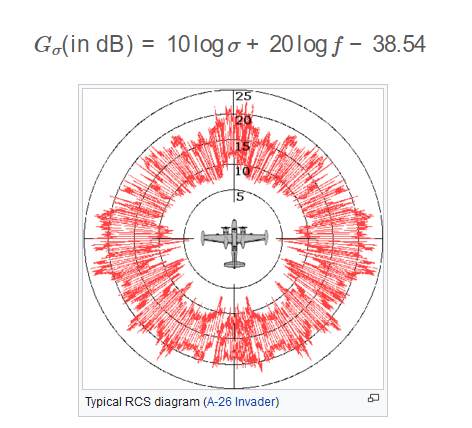 Home
Home
 Back
Back

Definition: This calculator determines the target gain factor \( G_{\sigma} \) (in dB) for a radar system, which quantifies the effective gain contributed by the target's radar cross section (RCS) and the radar's operating frequency. It is also known as the Gain of Radar Cross Section or Gain sub Sigma.
Purpose: It helps radar engineers and system designers evaluate the contribution of a target's RCS to the radar's performance, aiding in system design and target detection analysis.
The calculator uses the following formula to compute the target gain factor:
Target Gain Factor \( G_{\sigma} \) (in dB): \[ G_{\sigma}(\text{in dB}) = 10 \log \sigma + 20 \log f - 38.54 \]
Where:
Unit Conversions:
Steps:
Calculating the target gain factor is essential for:
Examples:
Q: What is the target gain factor in radar systems?
A: The target gain factor \( G_{\sigma} \) represents the effective gain contributed by a target’s radar cross section (RCS) and the radar’s operating frequency, expressed in dB. It quantifies how the target’s RCS enhances the radar’s detection capability.
Q: How does frequency affect the target gain factor?
A: The frequency \( f \) directly affects the target gain factor. A higher frequency increases the \( 20 \log f \) term, resulting in a higher \( G_{\sigma} \), making the radar more sensitive to the target.
Q: What factors influence the accuracy of this calculation?
A: The formula assumes ideal conditions. Real-world factors like target shape, material, aspect angle, and environmental effects (e.g., multipath, clutter) can affect the actual RCS and thus the target gain factor.